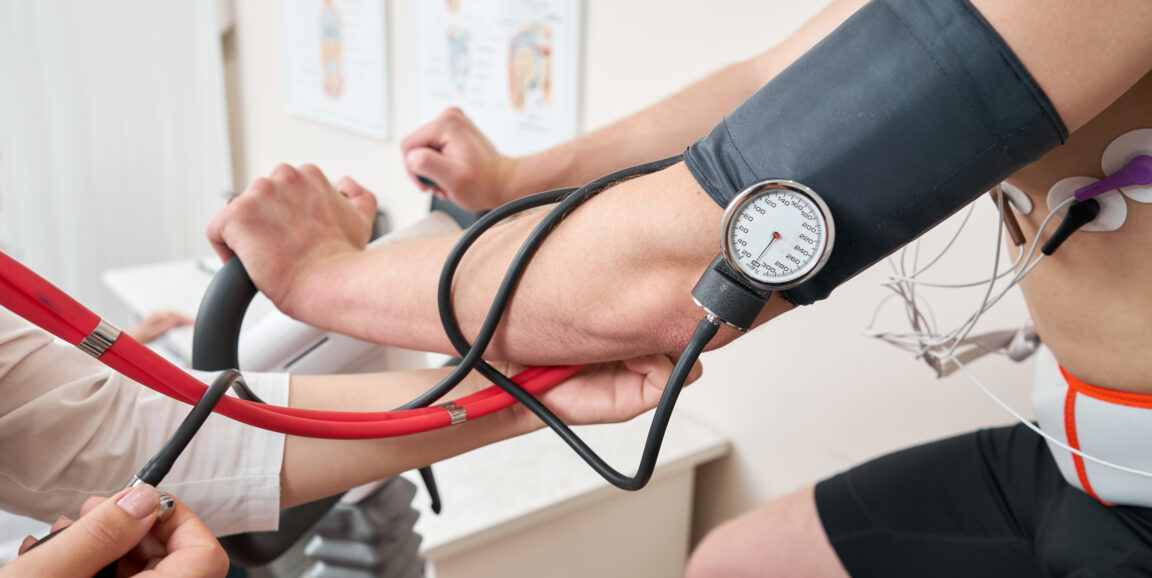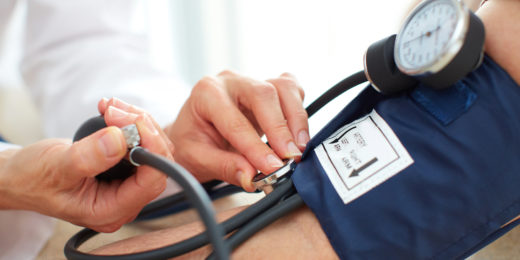Is it dangerous to have high blood pressure while at peak exertion during an exercise test on a treadmill? Stanford researchers set out to answer this question in response to a controversy over how best to interpret the results of common tests used to measure heart health.
Because it's generally known that high blood pressure is an indicator of poor heart health at rest, it may seem like commonsense that reaching high levels while exercising hard on a treadmill would be bad. In fact, many doctors do consider this a sign of potential heart or blood vessel problems. But, according to the Stanford research, they shouldn't always.
"Physicians often misinterpret these high blood pressure results from exercise tests," said Kristofer Hedman, MD, PhD, a former postdoctoral fellow at Stanford University School of Medicine and lead author of a paper on the research published recently in the European Journal of Preventive Cardiology. Jonathan Myers, MD, clinical professor of cardiovascular medicine at Stanford and director of cardiopulmonary research at Veterans Affairs Palo Alto Health Care System, and Francois Haddad, MD, clinical associate professor of cardiovascular medicine, were co-senior authors. A video abstract on the study is also available online.
The study found that if you have a high blood pressure during a stress test, it could actually indicate you are more fit, and that the problem with current guidelines for interpreting these blood pressure levels is that workload or "exercise intensity" is not being taken into account, said Hedman who now works as a physician at Linkoping University in Sweden.
As Hedman said of the research:
There is a well understood relationship between systolic blood pressure and exercise intensity, which to a large extent, gets ignored today when interpreting stress tests. We know that exercise intensity is strongly associated with survival, so if your fitness level is higher, you have a much higher survival rate.
Millions of people around the world undergo physician-prescribed cardiac stress tests each year to help gather data on how well their hearts are working. The patients, who usually show up in their physicians' offices with some sign of potential heart disease, either run, walk or cycle on a treadmill or a stationary bicycle while hooked up to machines that measure their heart rates and blood pressure, among other things.
U.S. guidelines say if the systolic blood pressure during a stress test exceeds 210 in men, or 190 in women, it's exaggerated. Systolic blood pressure is the higher number in a blood pressure measurement and indicates how much pressure blood is exerting against the artery walls when the heart beats. For example, if the blood pressure is 220/100, then 220 is the systolic pressure. Doctors commonly deduce that high levels are a sign of increased risk of heart disease or future risk of death.
To study whether this is true, researchers collected data from heart stress tests, taken both at rest and at peak exercise, by 7,500 men collected from 1987 to 2007 at the VA Palo Alto Health Care System. Researchers also collected mortality rates for this population extending out to 2018 showing that about half of the patients had died by that year.
Analysis of the data found that the higher the blood pressure at peak exercise, the lower the mortality rate over a 20-year period. The opposite was true when exercise workload was taken into account -- a higher blood pressure per unit of workload the higher the mortality.
"It's actually very logical," Hedman said. "When we exercise, the heart needs to pump more blood in each beat and in every minute, which causes systolic blood pressure to increase. The men who were measured with high blood pressure while exercising were in general achieving a higher workload -- they were more fit."
This is the first time these results have been shown in a large sample of study participants, Hedman said, and if verified in other studies that should include women, this could indicate that workload intensity should be used to determine guidelines for what a normal blood pressure measurement is during a peak exercise.
"These results could have clinical significance," he said.
Photo by malkovkosta






